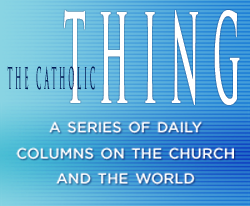The Abuse Summit: It’s Only the Beginning
February is not high tourist season in Rome. Skies are gray and temperatures low. St. Peter’s Square is relatively empty. But journalists filled the nearby Press Office earlier this week – more, according to one veteran, than since the death of St. John Paul II –because of the summit on the sex abuse crisis, which begins this evening with meetings between abuse survivors and participants, and continues Thursday through Saturday with formal sessions, parts of which will be streamed on the Vatican website. A video of the opening press briefing with remarks by Cardinal Cupich, Archbishop Scicluna, and other key figures is available by clicking here.
To be frank, it’s hard to say why so many journalists are here since no one, including Church spokesmen, expects that anything very dramatic will happen over the next few days – at least not in the formal sessions. What happens outside and around them, however, may be a different matter.
When the summit was announced last September, partly because of papal missteps in handling abuse cases in Chile, it seemed that the Church was going to take some large steps forward. There have been many smaller steps for years in many places around the world, everything from easier reporting mechanisms to better human formation in seminaries to the unprecedented laicization last weekend of former Cardinal Theodore McCarrick.
Expectations ran high, not least because the Holy Father asked the American bishops, during their annual November meeting, not to vote on ways to hold bishops accountable – whether they are abusers themselves, like McCarrick, or covered up abuse by people under their authority. They were told to wait until a uniform approach could be developed in February when many of the presidents of bishops’ conferences and heads of religious orders would gather together in Rome.



